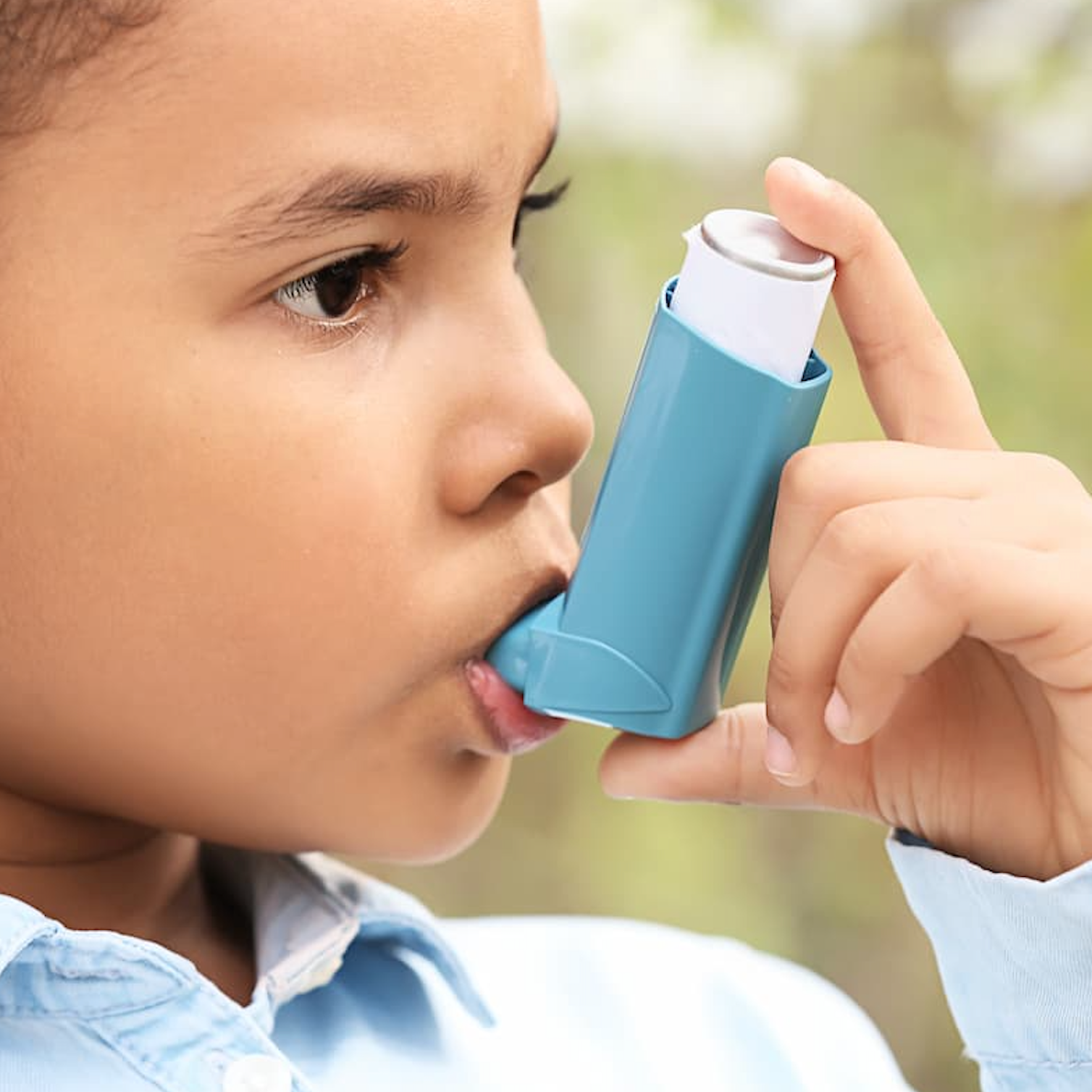Combination Inhaler Outperforms Traditional Rescue Inhaler in Kids
A New Zealand study found that a combination inhaler with budesonide and formoterol cut asthma attacks in children by nearly 45% compared with a standard rescue inhaler.
By
Lana Pine
| Published on October 8, 2025
5 min read
Credit: Adobe Stock/Pixel-Shot

For children with asthma, managing symptoms quickly and safely is key to preventing serious flare-ups. A new study from New Zealand has found that using a combination inhaler — one that includes both a low-dose inhaled corticosteroid (budesonide) and a fast-acting bronchodilator (formoterol) — may be a safer and more effective option than the traditional “rescue” inhaler that only contains a short-acting bronchodilator (salbutamol).
“This is a key step in addressing the evidence gap that exists between asthma management in adults and children,” said lead investigator Lee Hatter, MBBS, senior clinical research fellow at the Medical Research Institute of New Zealand (MRINZ). “For the first time, we have demonstrated that the budesonide-formoterol 2-in-1 inhaler, used as needed for symptom relief, can significantly reduce asthma attacks in children with mild asthma. This evidence-based treatment could lead to improved asthma outcomes for children worldwide.”
Inhaled corticosteroid (ICS)–formoterol combination inhalers are now the preferred treatment for adolescents and adults with mild asthma because they significantly reduce the risk of asthma attacks compared to traditional short-acting β₂-agonist (SABA) “rescue” inhalers. Major clinical trials have shown 51% to 60% fewer attacks with ICS–formoterol.
However, evidence in younger patients remains limited — so far, data only exist for teens aged 12-17. No studies have directly compared these treatments in children under 12, which is concerning given that asthma remains one of the most common chronic illnesses in children and can still cause serious complications — even in those with mild disease using only SABA inhalers.
The Children’s Anti-Inflammatory Reliever (CARE) study followed 360 children aged 5 to 15 years who had mild asthma and were using a SABA inhaler, such as salbutamol, to manage sudden symptoms. Participants were randomly assigned to one of two groups for a full year: one group used the budesonide–formoterol inhaler when symptoms occurred, while the other continued using a standard salbutamol inhaler.
Investigators wanted to know how often children in each group experienced asthma attacks, defined as episodes requiring medical attention or additional treatment.
Over 52 weeks, the results were clear: children who used the combination inhaler had almost half as many asthma attacks as those who used salbutamol alone. The annual rate of attacks was 0.23 per child in the budesonide–formoterol group compared to 0.41 per child in the salbutamol group — meaning the combination inhaler reduced attacks by 45%.
Importantly, the safety profile was similar between the two groups. About 9 in 10 children experienced at least one minor side effect, but there were no major safety differences between treatments.
The findings suggest that using a budesonide–formoterol inhaler “as needed” could be a more effective way to manage mild asthma in children, potentially reducing the number of flare-ups that interrupt school, play and sleep.
While this treatment approach has already been shown to be beneficial for adults, this is the first major trial to confirm similar results in children.
“Having an asthma attack can be very scary for children and their parents,” said co-investigator Andrew Bush, M.D., a senior respiratory pediatrician from Imperial College London. “I’m so pleased that we’ve been able to prove that an inhaler that significantly reduces attacks – already a game-changer for adults - is safe for children with mild asthma too.”
Investigators noted several limitations, including its open-label design (participants and doctors knew which treatment was given). However, this strategy also makes the findings more reflective of real-world asthma management. Additionally, some data were missing — partly due to a few participants having remote visits during the COVID-19 pandemic — and the study didn’t track exact medication use.
“Implementing these findings could be transformative for asthma management on a global scale,” concluded senior investigator Richard Beasley, M.D., MBChB, director of MRINZ. “The evidence that budesonide-formoterol is more effective than salbutamol in preventing asthma attacks in children with mild asthma has the potential to redefine the global standard of asthma management.”

